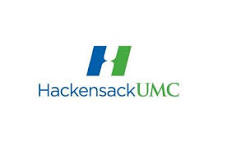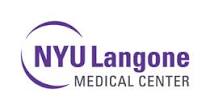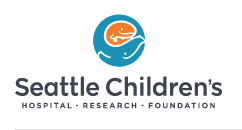Calaspargase Pegol or Pegaspargase and Combination Chemotherapy in Treating Younger Patients With Newly Diagnosed High-Risk Acute Lymphoblastic Leukemia
| Status: | Completed |
|---|---|
| Conditions: | Blood Cancer |
| Therapuetic Areas: | Oncology |
| Healthy: | No |
| Age Range: | 2 - 30 |
| Updated: | 9/8/2018 |
| Start Date: | July 2008 |
A Pilot Study of Intravenous EZN-2285 (SC-PEG E. Coli L-asparaginase, IND# 100594) or Intravenous Oncaspar® in the Treatment of Patients With High-Risk Acute Lymphoblastic Leukemia (ALL)
This randomized clinical trial is studying giving calaspargase pegol together with
combination chemotherapy to see how well it works compared with giving pegaspargase together
with combination chemotherapy in treating younger patients with newly diagnosed high-risk
acute lymphoblastic leukemia. Drugs used in chemotherapy work in different ways to stop the
growth of cancer cells, either by killing the cells or by stopping them from dividing. Giving
more than one drug (combination chemotherapy) may kill more cancer cells.
combination chemotherapy to see how well it works compared with giving pegaspargase together
with combination chemotherapy in treating younger patients with newly diagnosed high-risk
acute lymphoblastic leukemia. Drugs used in chemotherapy work in different ways to stop the
growth of cancer cells, either by killing the cells or by stopping them from dividing. Giving
more than one drug (combination chemotherapy) may kill more cancer cells.
PRIMARY OBJECTIVES:
I. To determine the pharmacokinetic comparability of EZN-2285 (calaspargase pegol) compared
to Oncaspar (pegaspargase) given intravenously during induction and consolidation in patients
with high-risk ALL receiving augmented Berlin-Frankfurt-Munster (BFM) therapy.
SECONDARY OBJECTIVES:
I. To describe the pharmacodynamics (PD) of EZN-2285 compared to Oncaspar given intravenously
during induction and consolidation in patients with high-risk ALL receiving augmented BFM
therapy.
II. To determine end of induction therapy day 29 minimal residual disease (MRD) for patients
randomized to the EZN-2285 containing regimen compared to the Oncaspar® containing regimen.
III. To determine the complete remission (CR) rates for patients receiving EZN-2285 by day 29
of induction compared to Oncaspar.
IV. To assess event-free survival (EFS) associated with the administration of EZN-2285 given
during augmented post Induction intensification therapy to patients with high-risk ALL
compared to Oncaspar.
V. To determine the proportion of patients with an asparaginase level of at least 0.1 IU/mL
and the proportion with at least 0.4 IU/mL on days 4, 15, 22 and 29 of induction compared to
Oncaspar.
VI. To determine the plasma and cerebrospinal fluid (CSF) concentrations of asparagine after
administration of EZN-2285 compared to Oncaspar.
VII. To assess the immunogenicity of EZN-2285 including the detection of binding and
neutralizing antibodies compared to Oncaspar.
VIII. To assess the tolerability and toxicities associated with the administration of
EZN-2285 given during augmented post induction intensification therapy to patients with high
risk ALL compared to Oncaspar.
IX. To explore the relationship between the terminal pharmacokinetics (PK) of EZN-2285 and
the presence of antibodies.
OUTLINE: This is a multicenter study. Patients are stratified according to response to
induction therapy (slow early responders [SER] vs rapid early responders [RER]. Patients are
randomized to 1 of 2 treatment arms in 2:1 ratio (arm I: arm II) (patients randomized to arm
I receive study drug calaspargase pegol*; patients randomized to arm II receive study drug
pegaspargase).
INDUCTION THERAPY** (ALL PATIENTS): Patients receive cytarabine intrathecally (IT) on day 1;
vincristine intravenously (IV) and daunorubicin hydrochloride IV over 15 minutes on days 1,
8, 15, and 22; prednisone orally or IV twice daily (BID) on days 1-28; study drug IV over 1
hour on day 4; and methotrexate IT on days 8, 15*, 22*, and 29. Patients are assessed for
response on day 8 and/or day 15 and day 29. Patients who achieve M1 marrow on day 8 or 15 and
negative MRD (i.e., < 0.1%) on day 29 are considered RER. Patients who achieve M2 or M3
marrow on day 15 OR MRD >= 0.1% but < 1% on day 29 are considered SER. Patients with M3 bone
marrow are removed from the study. RER and SER proceed to consolidation therapy. Patients
with M2 marrow or M1 marrow with >= 1% MRD receive extended induction therapy. Patients also
receive dexamethasone PO or IV BID on days 1-14 (patients < 10 years) or prednisone BID on
days 1-28 (patients >= 10 years)
NOTE: *For patients with CNS3 disease only.
EXTENDED INDUCTION THERAPY**: Patients receive vincristine IV on days 1 and 8; prednisone
orally (PO) or IV BID on days 1-14; daunorubicin hydrochloride IV over 15 minutes on day 1;
and study drug IV over 1 hour on day 4. Patients are assessed for response on day 43.
Patients who achieve M1 and MRD < 1% are treated as SER (proceed to consolidation therapy).
All other patients are removed from study.
CONSOLIDATION THERAPY** (ALL PATIENTS): Beginning on day 36 (after completion of induction
therapy) or after completion of extended induction therapy, patients (RER and SER) receive
cyclophosphamide IV over 30 minutes on days 1 and 29; cytarabine IV or SC on days 1-4, 8-11,
29-32, and 36-39; mercaptopurine PO on days 1-14 and 29-42; vincristine IV on days 15, 22,
43, and 50; study drug IV over 1 hour on days 15 and 43; and methotrexate IT on days 1, 8,
15*, and 22*. Patients then proceed to interim maintenance I therapy.
NOTE: *Omit doses for patients with CNS3 disease.
INTERIM MAINTENANCE I** (ALL PATIENTS): Patients receive vincristine IV and methotrexate** IV
on days 1, 11, 21, 31, and 41; study drug IV over 1 hour on days 2 and 22; and methotrexate
IT on days 1 and 31. Patients then proceed to delayed intensification I therapy.
DELAYED INTENSIFICATION I** (ALL PATIENTS): Patients receive vincristine IV on days 1, 8, 15,
43, and 50; dexamethasone PO or IV BID on days 1-21 for patients age 1-9, or on days 1-7 and
15-21 for patients age >= 10; doxorubicin hydrochloride IV over 15 minutes on days 1, 8, and
15; study drug IV over 1 hour on days 4 and 43; cyclophosphamide IV over 30 minutes on day
29; cytarabine IV or subcutaneously (SC) on days 29-32 and 36-39; thioguanine PO on days
29-42; and methotrexate IT on days 1, 29, and 36. Patients treated as RER proceed to
maintenance therapy. Patients treated as SER (i.e., patients with CNS3 disease at diagnosis,
or pre-treated with steroids, or who are RERs with mixed lineage leukemia [MLL] gene
rearrangements) proceed to interim maintenance II followed by delayed intensification II.
INTERIM MAINTENANCE II** (SER ONLY): Patients receive vincristine IV, methotrexate IV, study
drug IV, and methotrexate IT as in interim maintenance I.
DELAYED INTENSIFICATION II** (SER ONLY): Beginning on day 29, patients (except patients with
CNS3 disease) receive 8 daily fractions of cranial radiotherapy. All patients then receive
vincristine IV, dexamethasone PO or IV, doxorubicin hydrochloride IV, study drug IV,
cyclophosphamide IV, cytarabine IV or SC, thioguanine PO, and methotrexate IT as in delayed
intensification I. Patients who were initially diagnosed with CNS3 disease receive cranial
radiotherapy on days 1-5 and 8-12. Patients then proceed to maintenance therapy.
MAINTENANCE THERAPY** (ALL PATIENTS): Patients receive vincristine IV on days 1, 29, and 57;
oral dexamethasone on days 1-5, 29-33, and 57-61; mercaptopurine PO on days 1-84;
methotrexate IT on day 29; and methotrexate PO on days 8, 15, 22, 29, 36, 43, 50, 57, 64, 71,
and 78. Treatment repeats every 12 weeks for up to 2 years (for female patients) or up to 3
years (for male patients) from the start of interim maintenance I.
NOTE: ** As per amendment #4A, most patients receive high-dose methotrexate instead of
Capizzi methotrexate at most stages of therapy. CNS3 patients and SER patients who have
received cranial irradiation receive planned therapy with no modifications.
NOTE: As per amendment #4A, the maximum number of intrathecal treatments is limited by
RER/SER/CNS3 status and gender.
Blood and cerebrospinal fluid samples are collected periodically for correlative studies,
including immunogenicity, pharmacokinetic, and pharmacodynamic studies.
After completion of study therapy, patients are followed every 2 months for 2 years, every 3
months for 1 year, and then every 6-12 months for 2 years.
I. To determine the pharmacokinetic comparability of EZN-2285 (calaspargase pegol) compared
to Oncaspar (pegaspargase) given intravenously during induction and consolidation in patients
with high-risk ALL receiving augmented Berlin-Frankfurt-Munster (BFM) therapy.
SECONDARY OBJECTIVES:
I. To describe the pharmacodynamics (PD) of EZN-2285 compared to Oncaspar given intravenously
during induction and consolidation in patients with high-risk ALL receiving augmented BFM
therapy.
II. To determine end of induction therapy day 29 minimal residual disease (MRD) for patients
randomized to the EZN-2285 containing regimen compared to the Oncaspar® containing regimen.
III. To determine the complete remission (CR) rates for patients receiving EZN-2285 by day 29
of induction compared to Oncaspar.
IV. To assess event-free survival (EFS) associated with the administration of EZN-2285 given
during augmented post Induction intensification therapy to patients with high-risk ALL
compared to Oncaspar.
V. To determine the proportion of patients with an asparaginase level of at least 0.1 IU/mL
and the proportion with at least 0.4 IU/mL on days 4, 15, 22 and 29 of induction compared to
Oncaspar.
VI. To determine the plasma and cerebrospinal fluid (CSF) concentrations of asparagine after
administration of EZN-2285 compared to Oncaspar.
VII. To assess the immunogenicity of EZN-2285 including the detection of binding and
neutralizing antibodies compared to Oncaspar.
VIII. To assess the tolerability and toxicities associated with the administration of
EZN-2285 given during augmented post induction intensification therapy to patients with high
risk ALL compared to Oncaspar.
IX. To explore the relationship between the terminal pharmacokinetics (PK) of EZN-2285 and
the presence of antibodies.
OUTLINE: This is a multicenter study. Patients are stratified according to response to
induction therapy (slow early responders [SER] vs rapid early responders [RER]. Patients are
randomized to 1 of 2 treatment arms in 2:1 ratio (arm I: arm II) (patients randomized to arm
I receive study drug calaspargase pegol*; patients randomized to arm II receive study drug
pegaspargase).
INDUCTION THERAPY** (ALL PATIENTS): Patients receive cytarabine intrathecally (IT) on day 1;
vincristine intravenously (IV) and daunorubicin hydrochloride IV over 15 minutes on days 1,
8, 15, and 22; prednisone orally or IV twice daily (BID) on days 1-28; study drug IV over 1
hour on day 4; and methotrexate IT on days 8, 15*, 22*, and 29. Patients are assessed for
response on day 8 and/or day 15 and day 29. Patients who achieve M1 marrow on day 8 or 15 and
negative MRD (i.e., < 0.1%) on day 29 are considered RER. Patients who achieve M2 or M3
marrow on day 15 OR MRD >= 0.1% but < 1% on day 29 are considered SER. Patients with M3 bone
marrow are removed from the study. RER and SER proceed to consolidation therapy. Patients
with M2 marrow or M1 marrow with >= 1% MRD receive extended induction therapy. Patients also
receive dexamethasone PO or IV BID on days 1-14 (patients < 10 years) or prednisone BID on
days 1-28 (patients >= 10 years)
NOTE: *For patients with CNS3 disease only.
EXTENDED INDUCTION THERAPY**: Patients receive vincristine IV on days 1 and 8; prednisone
orally (PO) or IV BID on days 1-14; daunorubicin hydrochloride IV over 15 minutes on day 1;
and study drug IV over 1 hour on day 4. Patients are assessed for response on day 43.
Patients who achieve M1 and MRD < 1% are treated as SER (proceed to consolidation therapy).
All other patients are removed from study.
CONSOLIDATION THERAPY** (ALL PATIENTS): Beginning on day 36 (after completion of induction
therapy) or after completion of extended induction therapy, patients (RER and SER) receive
cyclophosphamide IV over 30 minutes on days 1 and 29; cytarabine IV or SC on days 1-4, 8-11,
29-32, and 36-39; mercaptopurine PO on days 1-14 and 29-42; vincristine IV on days 15, 22,
43, and 50; study drug IV over 1 hour on days 15 and 43; and methotrexate IT on days 1, 8,
15*, and 22*. Patients then proceed to interim maintenance I therapy.
NOTE: *Omit doses for patients with CNS3 disease.
INTERIM MAINTENANCE I** (ALL PATIENTS): Patients receive vincristine IV and methotrexate** IV
on days 1, 11, 21, 31, and 41; study drug IV over 1 hour on days 2 and 22; and methotrexate
IT on days 1 and 31. Patients then proceed to delayed intensification I therapy.
DELAYED INTENSIFICATION I** (ALL PATIENTS): Patients receive vincristine IV on days 1, 8, 15,
43, and 50; dexamethasone PO or IV BID on days 1-21 for patients age 1-9, or on days 1-7 and
15-21 for patients age >= 10; doxorubicin hydrochloride IV over 15 minutes on days 1, 8, and
15; study drug IV over 1 hour on days 4 and 43; cyclophosphamide IV over 30 minutes on day
29; cytarabine IV or subcutaneously (SC) on days 29-32 and 36-39; thioguanine PO on days
29-42; and methotrexate IT on days 1, 29, and 36. Patients treated as RER proceed to
maintenance therapy. Patients treated as SER (i.e., patients with CNS3 disease at diagnosis,
or pre-treated with steroids, or who are RERs with mixed lineage leukemia [MLL] gene
rearrangements) proceed to interim maintenance II followed by delayed intensification II.
INTERIM MAINTENANCE II** (SER ONLY): Patients receive vincristine IV, methotrexate IV, study
drug IV, and methotrexate IT as in interim maintenance I.
DELAYED INTENSIFICATION II** (SER ONLY): Beginning on day 29, patients (except patients with
CNS3 disease) receive 8 daily fractions of cranial radiotherapy. All patients then receive
vincristine IV, dexamethasone PO or IV, doxorubicin hydrochloride IV, study drug IV,
cyclophosphamide IV, cytarabine IV or SC, thioguanine PO, and methotrexate IT as in delayed
intensification I. Patients who were initially diagnosed with CNS3 disease receive cranial
radiotherapy on days 1-5 and 8-12. Patients then proceed to maintenance therapy.
MAINTENANCE THERAPY** (ALL PATIENTS): Patients receive vincristine IV on days 1, 29, and 57;
oral dexamethasone on days 1-5, 29-33, and 57-61; mercaptopurine PO on days 1-84;
methotrexate IT on day 29; and methotrexate PO on days 8, 15, 22, 29, 36, 43, 50, 57, 64, 71,
and 78. Treatment repeats every 12 weeks for up to 2 years (for female patients) or up to 3
years (for male patients) from the start of interim maintenance I.
NOTE: ** As per amendment #4A, most patients receive high-dose methotrexate instead of
Capizzi methotrexate at most stages of therapy. CNS3 patients and SER patients who have
received cranial irradiation receive planned therapy with no modifications.
NOTE: As per amendment #4A, the maximum number of intrathecal treatments is limited by
RER/SER/CNS3 status and gender.
Blood and cerebrospinal fluid samples are collected periodically for correlative studies,
including immunogenicity, pharmacokinetic, and pharmacodynamic studies.
After completion of study therapy, patients are followed every 2 months for 2 years, every 3
months for 1 year, and then every 6-12 months for 2 years.
Inclusion Criteria:
- Patients must be eligible for and enrolled on AALL08B1 or the successor classification
study
- Patients must have newly diagnosed high-risk B lymphoblastic leukemia (World Health
Organization [WHO] 2008 classification) (also termed B-precursor acute lymphoblastic
leukemia)
- White blood cell (WBC) >= 50,000/μL for patients age 1-9 OR any WBC count for patients
age 10-30 or for patients treated with prior steroids
- Patients shall have had no prior cytotoxic chemotherapy with the exception of steroids
and intrathecal cytarabine; intrathecal chemotherapy with cytarabine is allowed prior
to registration for patient convenience; this is usually done at the time of the
diagnostic bone marrow or venous line placement to avoid a second lumbar puncture;
(Note: the CNS status must be determined based on a sample obtained prior to
administration of any systemic or intrathecal chemotherapy, except for steroid
pretreatment) systemic chemotherapy must begin within 72 hours of this intrathecal
therapy
- Patients receiving prior steroid therapy are eligible for this study; the dose and
duration of previous steroid therapy should be carefully documented
- Pregnancy tests with a negative result must be obtained in all post-menarchal females
- Lactating females must agree that they will not breastfeed a child while on this study
Exclusion Criteria:
- Patients with Down syndrome are excluded from this study
- Patients with testicular leukemia at diagnosis are excluded from this study
- Pregnant female patients are excluded from this study
We found this trial at
25
sites
940 NE 13th St
Oklahoma City, Oklahoma 73190
Oklahoma City, Oklahoma 73190
(405) 271-6458

University of Oklahoma Health Sciences Center The OU Health Sciences Center is composed of seven...
Click here to add this to my saved trials
1201 Camino de Salud Northeast
Albuquerque, New Mexico 87131
Albuquerque, New Mexico 87131
(505) 272-4946

University of New Mexico Cancer Center It’s been 40 years since the New Mexico State...
Click here to add this to my saved trials
3333 Burnet Avenue # Mlc3008
Cincinnati, Ohio 45229
Cincinnati, Ohio 45229
1-513-636-4200

Cincinnati Children's Hospital Medical Center Patients and families from across the region and around the...
Click here to add this to my saved trials
Connecticut Children's Medical Center Connecticut Children’s Medical Center is a nationally recognized, 187-bed not-for-profit children’s...
Click here to add this to my saved trials
Vanderbilt-Ingram Cancer Center The Vanderbilt-Ingram Cancer Center, located in Nashville, Tenn., brings together the clinical...
Click here to add this to my saved trials
Children's Hospital of Orange County For more than 45 years, CHOC Children’s has been steadfastly...
Click here to add this to my saved trials
Children's Hospital of Philadelphia Since its start in 1855 as the nation's first hospital devoted...
Click here to add this to my saved trials
4401 Penn Avenue
Pittsburgh, Pennsylvania 15224
Pittsburgh, Pennsylvania 15224
412-692-5325
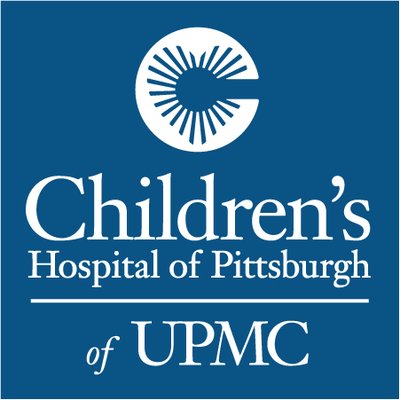
Children's Hospital of Pittsburgh of UPMC UPMC is one of the leading nonprofit health systems...
Click here to add this to my saved trials
3181 Southwest Sam Jackson Park Road
Portland, Oregon 97239
Portland, Oregon 97239
503 494-8311

Oregon Health and Science University In 1887, the inaugural class of the University of Oregon...
Click here to add this to my saved trials
Children's Hospital Colorado At Children's Hospital Colorado, we see more, treat more and heal more...
Click here to add this to my saved trials
401 North Broadway
Baltimore, Maryland 21287
Baltimore, Maryland 21287
410-955-5000

Johns Hopkins University-Sidney Kimmel Cancer Center The name Johns Hopkins has become synonymous with excellence...
Click here to add this to my saved trials
Click here to add this to my saved trials
University of Texas Southwestern Medical Center UT Southwestern is an academic medical center, world-renowned for...
Click here to add this to my saved trials
4160 John R St #2122
Detroit, Michigan 48201
Detroit, Michigan 48201
(313) 833-1785
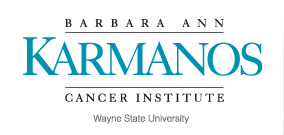
Wayne State University/Karmanos Cancer Institute Karmanos is based in southeast Michigan, in midtown Detroit, and...
Click here to add this to my saved trials
Hackensack University Medical Center Hackensack University Medical Center, part of the Hackensack University Health Network,...
Click here to add this to my saved trials
Click here to add this to my saved trials
Indiana University Medical Center Indiana University Health is Indiana
Click here to add this to my saved trials
2450 Riverside Ave
Minneapolis, Minnesota 55454
Minneapolis, Minnesota 55454
(612) 273-3000

University of Minnesota Medical Center, Fairview Improving patients' lives drives the innovation that makes University...
Click here to add this to my saved trials
2525 Chicago Ave
Minneapolis, Minnesota 55404
Minneapolis, Minnesota 55404
(612) 813-6000
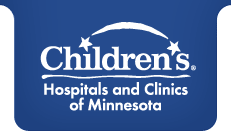
Children's Hospitals and Clinics of Minnesota - Minneapolis Children's Hospitals and Clinics of Minnesota is...
Click here to add this to my saved trials
New York University Langone Medical Center NYU NYU Langone Medical Center, a world-class, patient-centered, integrated,...
Click here to add this to my saved trials
725 Welch Rd
Palo Alto, California 94304
Palo Alto, California 94304
(650) 497-8000
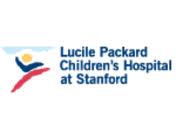
Lucile Packard Children's Hospital Stanford University Stanford Children's Health is the only network in the...
Click here to add this to my saved trials
660 S Euclid Ave
Saint Louis, Missouri 63110
Saint Louis, Missouri 63110
(314) 362-5000

Washington University School of Medicine Washington University Physicians is the clinical practice of the School...
Click here to add this to my saved trials
Click here to add this to my saved trials
Seattle Children's Hospital Seattle Children’s Hospital specializes in meeting the unique physical, emotional and developmental...
Click here to add this to my saved trials
111 Michigan Ave NW
Washington, District of Columbia
Washington, District of Columbia
(202) 476-5000
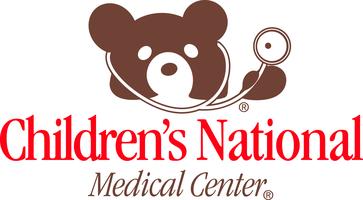
Childrens National Medical Center As the nation’s children’s hospital, the mission of Children’s National Medical...
Click here to add this to my saved trials






